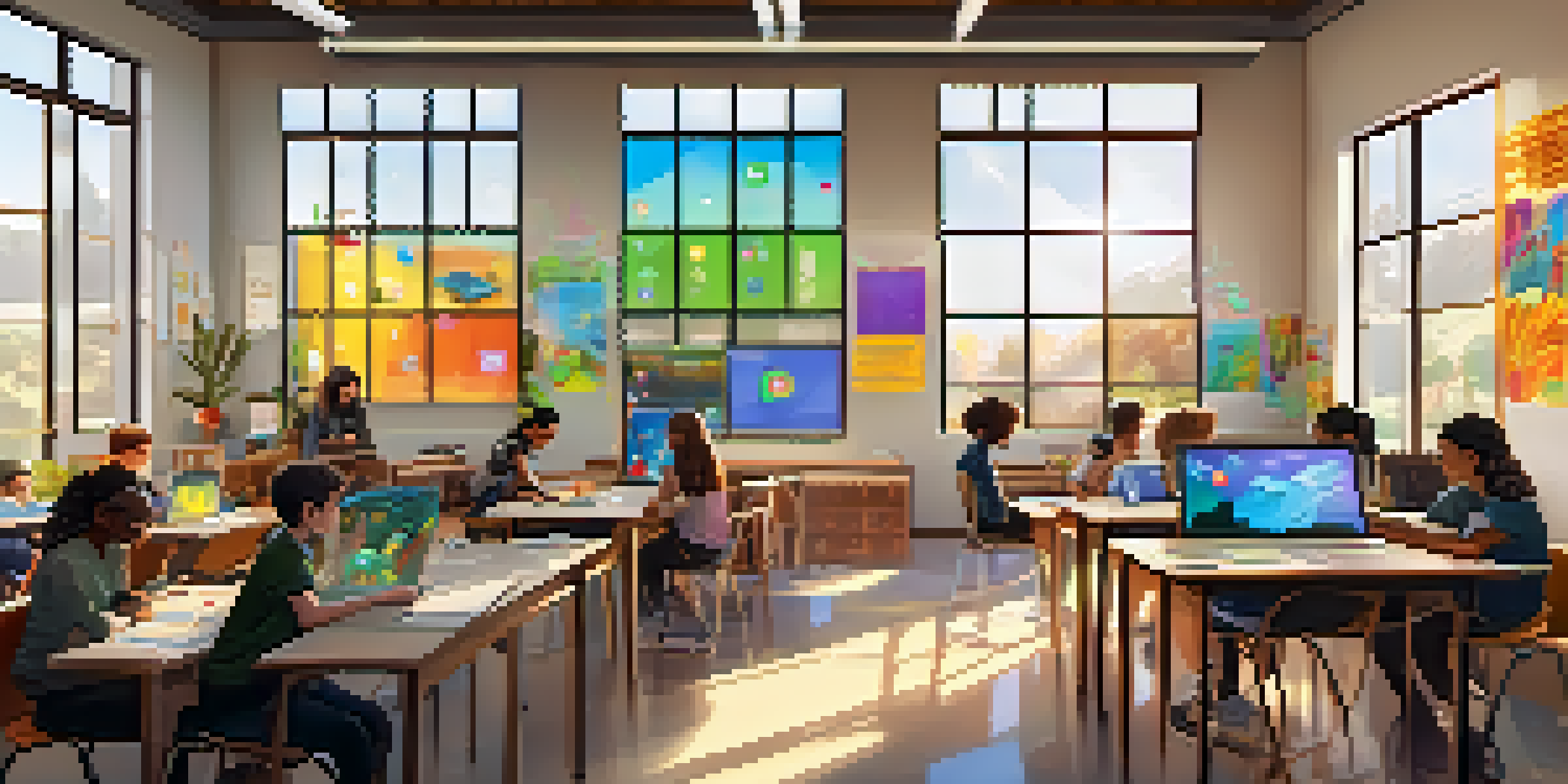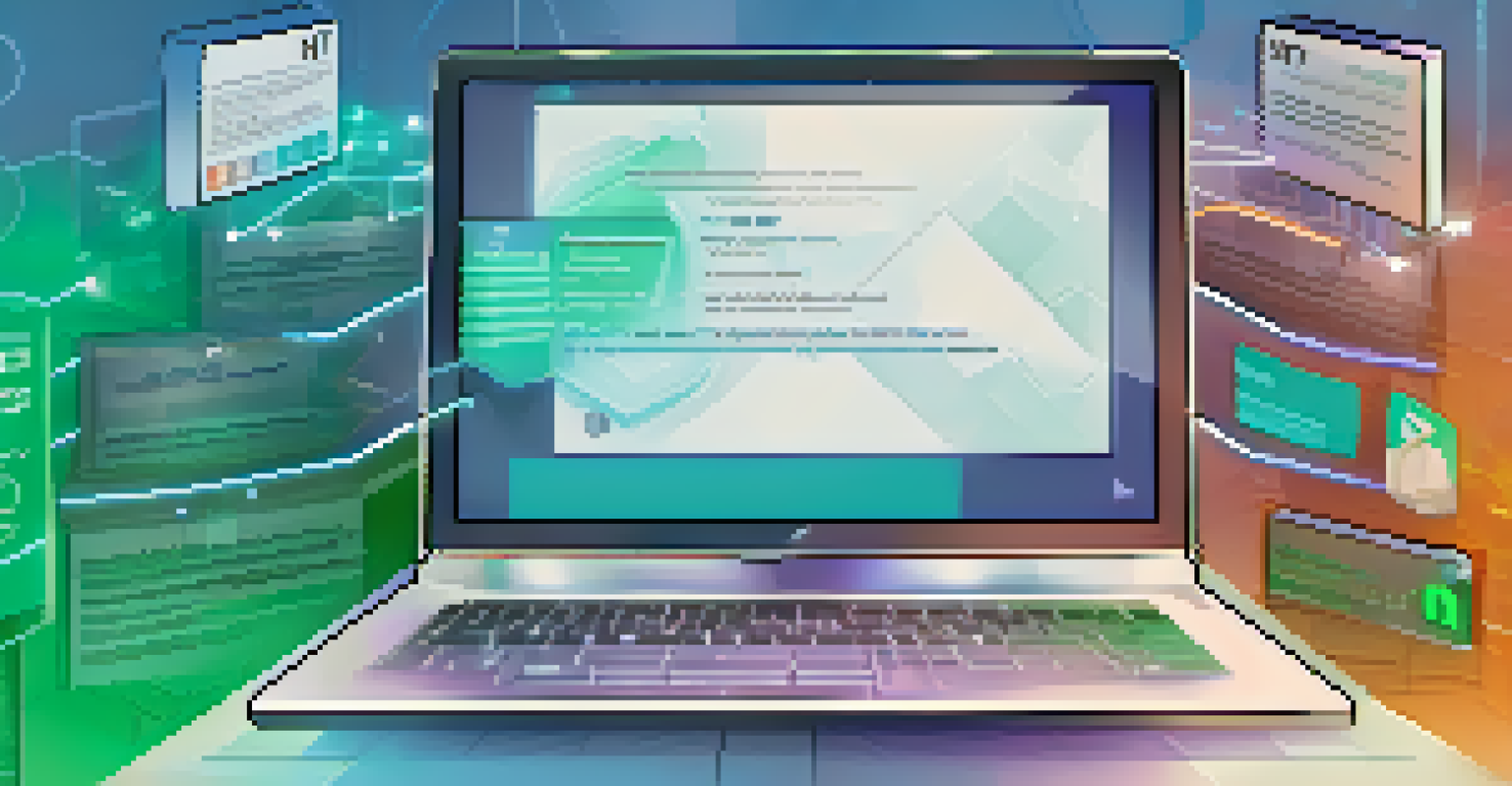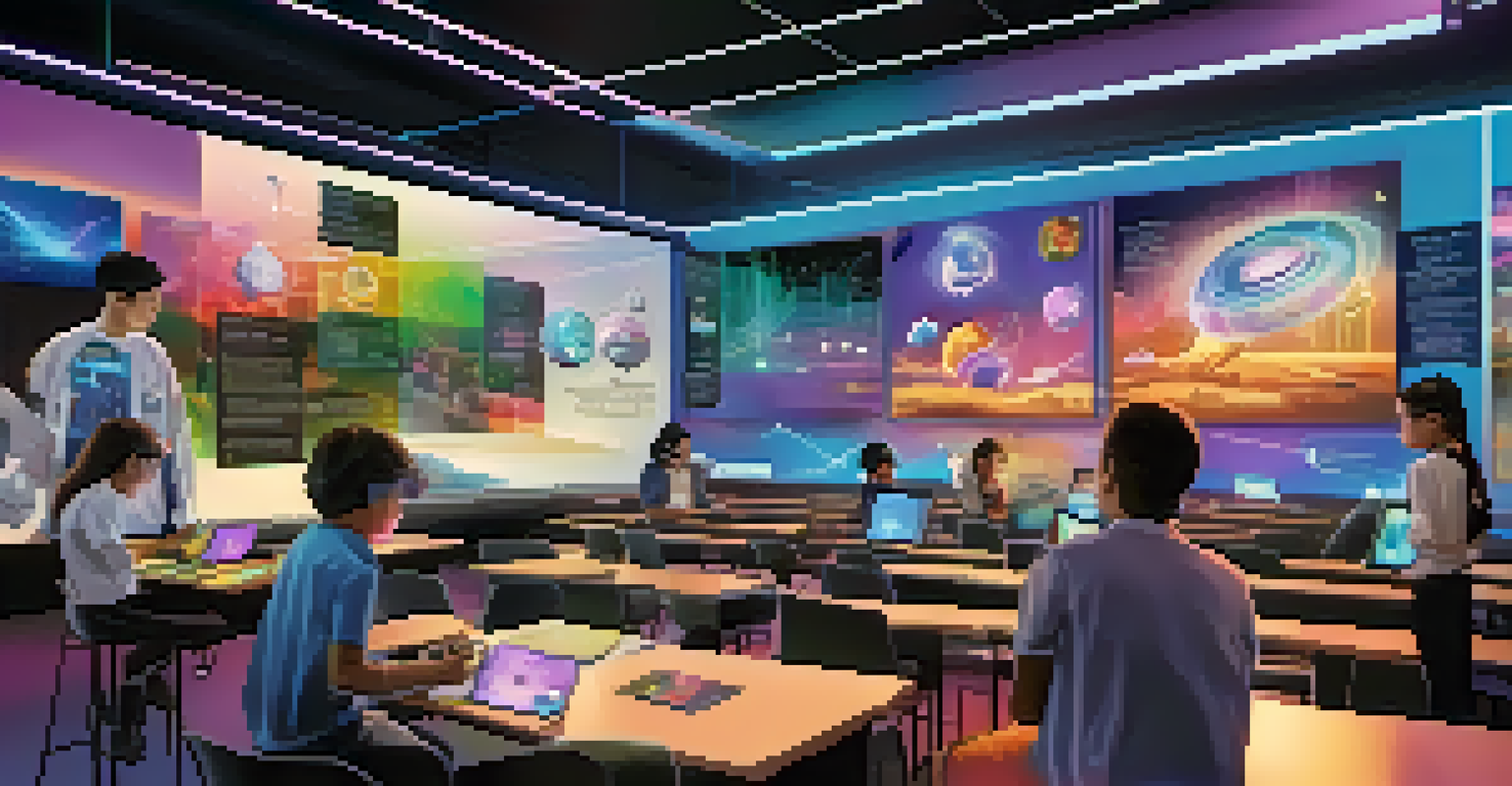Decentralized Learning: NFTs as Tools for Student Achievements

Understanding Decentralized Learning and Its Impact
Decentralized learning refers to educational methods that are not confined to traditional institutions. Instead, it emphasizes learner autonomy and community-driven knowledge sharing. With the rise of technology, educators have begun to explore new ways to engage students beyond the classroom setting.
Education is not the filling of a pail, but the lighting of a fire.
This shift allows learners to access resources and expertise from around the globe, making education more inclusive. By breaking down geographical barriers, decentralized learning empowers students to take charge of their educational journeys. They can learn at their own pace, tailoring their experiences to fit personal interests and goals.
In this landscape, new tools like NFTs (Non-Fungible Tokens) are emerging as game-changers. These digital assets can represent a variety of achievements, from certificates to unique projects, making learning more interactive and rewarding.
What Are NFTs and How Do They Work?
NFTs are unique digital tokens that exist on a blockchain, making them distinct and verifiable. Unlike cryptocurrencies, which are interchangeable, each NFT represents a one-of-a-kind item or piece of content. This could range from digital art to music and, importantly, educational achievements.

When a student completes a course or achieves a milestone, an NFT can be created to commemorate that accomplishment. The NFT serves as a permanent record, accessible and shareable, allowing students to showcase their skills and knowledge in a novel way. This can also be a motivating factor for students, encouraging them to strive for excellence.
Decentralized Learning Empowers Students
Decentralized learning promotes learner autonomy and global access to resources, enabling students to tailor their educational experiences.
By leveraging blockchain technology, NFTs ensure that students' achievements are secure and cannot be tampered with. This authenticity adds value to the accolades, making them more meaningful in the eyes of future employers or educational institutions.
Benefits of Using NFTs in Education
Integrating NFTs into the educational space offers numerous benefits. One of the most significant is the ability to provide verifiable proof of achievements. This can help students build a digital portfolio showcasing their skills and competencies, which is increasingly valuable in today's job market.
The beautiful thing about learning is that no one can take it away from you.
Additionally, NFTs can foster a sense of community among learners. Students can trade or share their tokens, creating a network of shared accomplishments that encourages collaboration and support. This social aspect can enhance motivation and engagement, making learning more enjoyable.
Moreover, NFTs can incentivize continuous learning. Educators can issue NFTs for various milestones, not just course completions, encouraging students to explore diverse subjects and skills throughout their educational journey.
Challenges and Considerations of NFTs in Education
Despite the potential benefits, integrating NFTs into education comes with its own set of challenges. One major concern is the accessibility of technology. Not all students have equal access to the devices or internet connections needed to engage with NFT platforms effectively.
There’s also the question of environmental impact, as blockchain technology can be energy-intensive. Educators and institutions must weigh the benefits against the carbon footprint of maintaining these digital systems. Finding eco-friendly solutions will be crucial for sustainable implementation.
NFTs Enhance Educational Achievements
NFTs serve as unique digital tokens that can represent educational achievements, providing verifiable proof and motivating students.
Lastly, the concept of NFTs may be unfamiliar or daunting to some educators and students. Educational institutions will need to invest time in training and resources to ensure everyone can navigate this new landscape confidently.
Real-World Examples of NFTs in Education
Several educational platforms are already experimenting with NFTs to enhance student learning. For instance, platforms like OpenSea and Rarible allow creators to mint NFTs representing educational content and achievements. This showcases how NFTs can bridge the gap between formal education and creative expression.
Some universities have also begun issuing NFT diplomas, allowing graduates to securely store and share their credentials. This innovation not only simplifies the verification process for employers but also offers graduates a unique digital asset that reflects their hard work and dedication.
These examples highlight the growing trend of integrating blockchain technology into education, showcasing its potential to revolutionize how we recognize and celebrate student achievements.
How to Implement NFTs in Your Learning Environment
For educators interested in incorporating NFTs into their classrooms, the first step is to familiarize themselves with blockchain technology and its implications. Understanding how NFTs function will enable teachers to better explain their value to students.
Next, educators can collaborate with tech-savvy partners or platforms that specialize in NFT creation. This collaboration can help streamline the process of minting and distributing NFTs for student achievements, making it more accessible for everyone involved.
Challenges of Implementing NFTs
Integrating NFTs in education faces challenges such as technology accessibility, environmental concerns, and the need for educator training.
Finally, it's essential to engage students in the conversation. By discussing the potential of NFTs and involving them in the decision-making process, educators can create a more inclusive environment that embraces innovation and encourages student ownership of their learning.
The Future of Decentralized Learning with NFTs
As we look to the future, the potential for decentralized learning combined with NFTs is immense. This approach can fundamentally change how we perceive and reward student achievements, making education more personalized and engaging. The possibilities are only limited by our imagination.
With ongoing advancements in technology, we can expect to see more educational institutions embracing this model, leading to a more dynamic learning environment. Students will have the opportunity to curate their learning experiences and celebrate their unique journeys in unprecedented ways.

Ultimately, the fusion of decentralized learning and NFTs holds the promise of a more equitable and accessible educational landscape, where every achievement is recognized, valued, and celebrated.